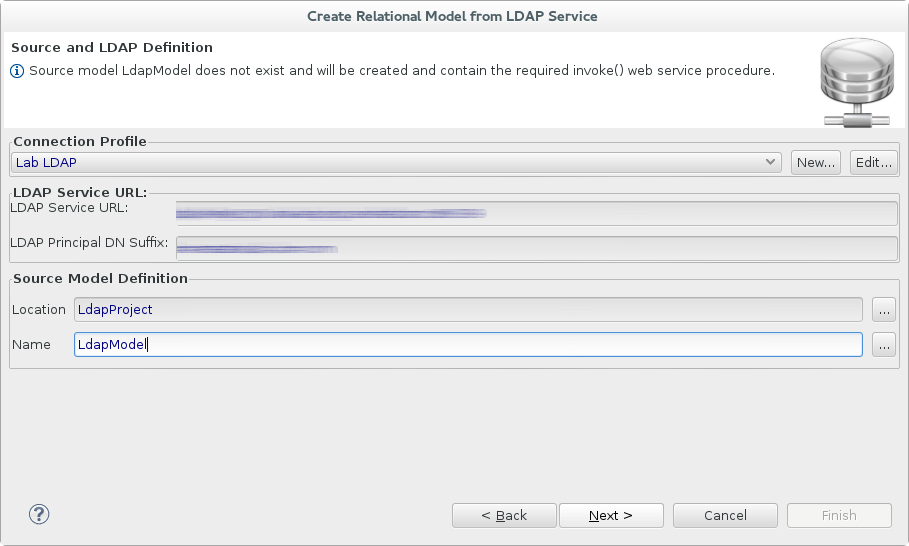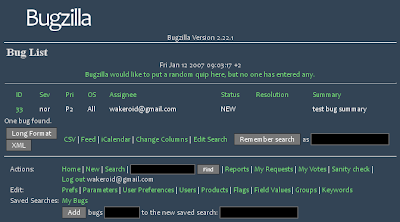
- #Bugzilla ldap how to
- #Bugzilla ldap install
- #Bugzilla ldap driver
- #Bugzilla ldap full
- #Bugzilla ldap software
#Bugzilla ldap install
Install Perl on Ubuntu 20.04, and other required (including some optional) package dependencies. However, if possible you should install Perl 5.12 or newer, as these newer versions have some useful improvements which will make your life easier.

Bugzilla 5.0 and newer require Perl 5.10.1. Perl is the core requirement of installing and running Bugzilla.

Well, once you setup your server with your desired requirements, you can proceed to install Bugzilla. Install Bugzilla Bug Tracker on Ubuntu 20.04
#Bugzilla ldap software
These include the system OS, the hardware and software requirements as outlined on Bugzilla requirements page. In order to install Bugzilla bug tracker on Ubuntu 20.04, there are a few system considerations you might want to make. Reach out to our Support Team if you have any questions.Ĭnxn = mod.connect("Url= sql = "SELECT Id, Summary FROM Bugs WHERE Creator = etl.Install Bugzilla Bug Tracker on Ubuntu 20.04 Prerequisites Free Trial & More Informationĭownload a free, 30-day trial of the Bugzilla Python Connector to start building Python apps and scripts with connectivity to Bugzilla data. With the CData Python Connector for Bugzilla, you can work with Bugzilla data just like you would with any database, including direct access to data in ETL packages like petl.

In this example, we extract Bugzilla data, sort the data by the Summary column, and load the data into a CSV file. With the query results stored in a DataFrame, we can use petl to extract, transform, and load the Bugzilla data. Sql = "SELECT Id, Summary FROM Bugs WHERE Creator = Transform, and Load the Bugzilla Data In this article, we read data from the Bugs entity. Use SQL to create a statement for querying Bugzilla. Use the connect function for the CData Bugzilla Connector to create a connection for working with Bugzilla data.Ĭnxn = mod.connect("Url= Create a SQL Statement to Query Bugzilla You can now connect with a connection string.
#Bugzilla ldap full
Code snippets follow, but the full source code is available at the end of the article.įirst, be sure to import the modules (including the CData Connector) with the following: Once the required modules and frameworks are installed, we are ready to build our ETL app. Pip install pandas Build an ETL App for Bugzilla Data in Python Use the pip utility to install the required modules and frameworks: pip install petl ApiKey: API Keys can be generated from the Preferences -> API Keys section of your Bugzilla developer's page.Īfter installing the CData Bugzilla Connector, follow the procedure below to install the other required modules and start accessing Bugzilla through Python objects.URL: The URL of your Bugzilla developer's page (the Home page).You can authenticate to your Bugzilla account using two parameters:

For this article, you will pass the connection string as a parameter to the create_engine function. Create a connection string using the required connection properties.
#Bugzilla ldap driver
When you issue complex SQL queries from Bugzilla, the driver pushes supported SQL operations, like filters and aggregations, directly to Bugzilla and utilizes the embedded SQL engine to process unsupported operations client-side (often SQL functions and JOIN operations).Ĭonnecting to Bugzilla data looks just like connecting to any relational data source. With built-in, optimized data processing, the CData Python Connector offers unmatched performance for interacting with live Bugzilla data in Python.
#Bugzilla ldap how to
This article shows how to connect to Bugzilla with the CData Python Connector and use petl and pandas to extract, transform, and load Bugzilla data. With the CData Python Connector for Bugzilla and the petl framework, you can build Bugzilla-connected applications and pipelines for extracting, transforming, and loading Bugzilla data. The rich ecosystem of Python modules lets you get to work quickly and integrate your systems more effectively.


 0 kommentar(er)
0 kommentar(er)
